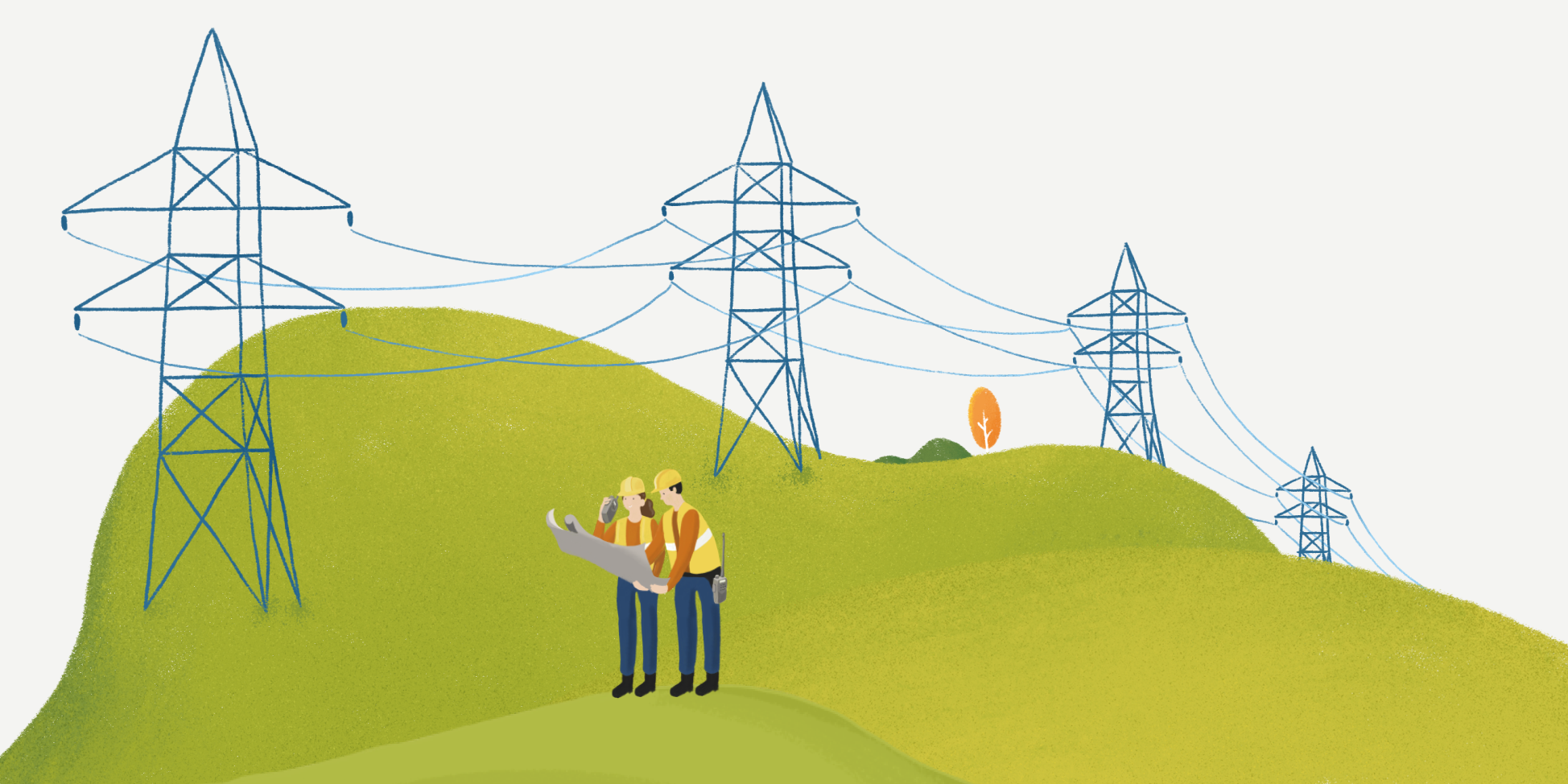
Did you know??
Overhead power lines near the areas where you are working can pose a serious risk to your activity.
Using machinery (cranes, excavators, etc.), vehicles (dump trucks, cranes, aerial lifts, etc.), work equipment (ladders, ladders, scaffolding, etc.) or large materials (wire, etc.) in their proximity can be very dangerous.
If machinery, equipment and other tools contact or come close to the lines you may suffer an electric shock.
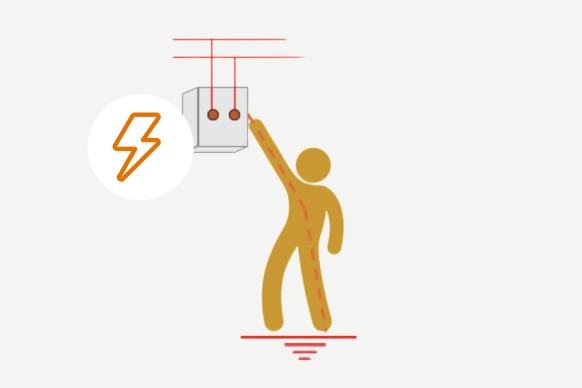
Effects due to current passage
- Death due to ventricular fibrillation
- Death by respiratory arrest and asphyxia
- Muscle tetanization (sticking)
- Internal and external burns (fatal and non-fatal)
- Embolisms due to blood electrolysis
- High frequency burns
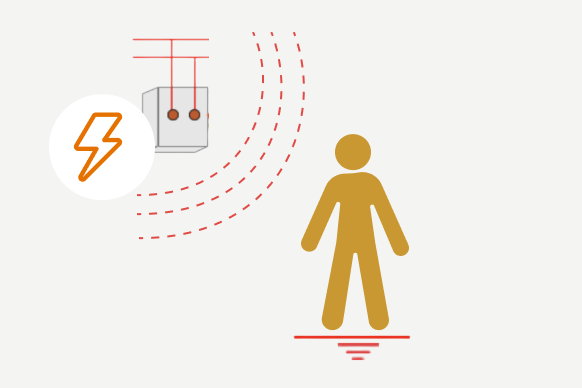
Non-current effects
- Electric arc burns, particle projections, etc.
- Ophthalmological injuries due to electric arcs (conjunctivitis, blindness).
- Fires and explosions
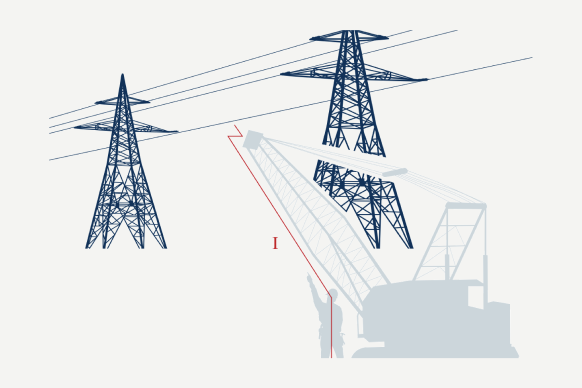
Danger distance
- You can be electrocuted without touching a live element, since by bringing a conductive material (watch, buckles, chains, rings, tools…) close to the voltage source, you could suffer the effects of the passage of electric current.
Good practices
Tips to avoid risk in your job
work
- Before starting the execution of work on construction sites, analyze the movements of machines, equipment and materials that could come into contact with overhead power lines.
- Plan the necessary actions to delimit or restrict the movements and displacements of the machines (cranes, trucks with basket or basket), so that they work within safe areas without invading the proximity distances even in the most unfavorable situations (maximum elevations or displacements of the moving parts).
- When calculating safety distances, it is necessary to consider the oscillation of the lifting cable or suspension and lowering of loads, their rotation and the sudden movements of the basket, basket, cranes, etc., which can produce oscillations and come too close to the power lines.
- There are power lines that run stapled to the facades of buildings, and even if they are braided and insulated, they are not considered insulated. An accidental perforation of the same one can produce an electric shock to you. Notify the distribution company that you are carrying out work on the facades to temporarily divert lines by calling 900 111 999.
- Use devices on the equipment itself that limit the range of movement of its moving parts.
- Place obstacles in the work area to prevent approaching the line.
- Install barriers at height by means of gantries so as not to exceed the distances.
- Maintain the permanent supervision of the Work Manager during these operations.
What to do in case of a cable fall cable
- Report the incident to 112.
- Do not touch or approach the cable, neither you nor the rest of the personnel in the area.
- Move away with very short steps or jumping.
If you are inside a vehicle or machine when it falls:
- Do not move, stay in the cab, maneuvering if possible, to avoid contact with the cable.
- Order people to move as far away as possible from the surroundings until contact ceases. And do not touch the vehicle.
- If the vehicle catches fire before leaving it, check that there are no wires on the ground, and jump out with your feet together, walking away with short steps.
- When leaving the cab, jump with your feet together as far away as possible, do not touch the machine or vehicle and the ground at the same time.
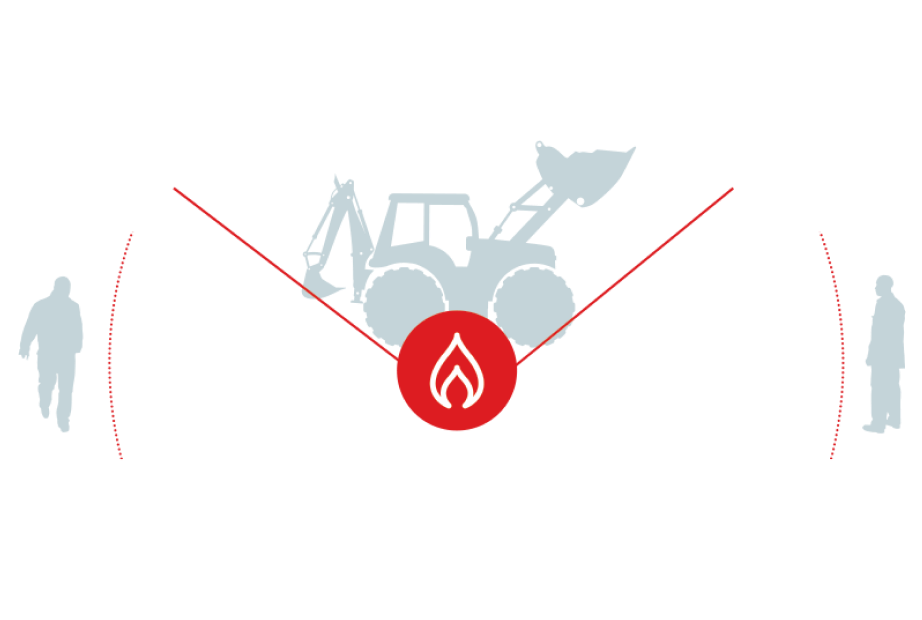
Safety distances to be respected
Before performing your tasks in proximity to electrical installations, you must know the safety distances:
- Visualize electrical installations well to avoid approaching them, both horizontally and vertically.
- Do not invade the safety distances of electrical installations with your body or with elements of machinery or other equipment, as they are an extension of your body.
- Working at certain distances from a live element requires specific training and qualifications.
- If you cannot respect or guarantee these distances, stop the activity and contact the distribution company (UFD 900 11 999).
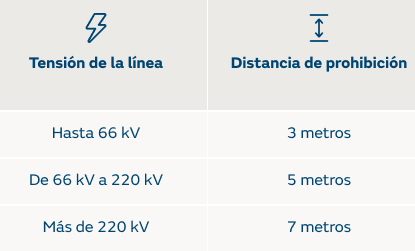

In case of doubt…
stop work and contact UFD on 900 111 999. In case of emergency contact 112.
Do you want to download the information on this page about Electrical Safety in Fishing?


